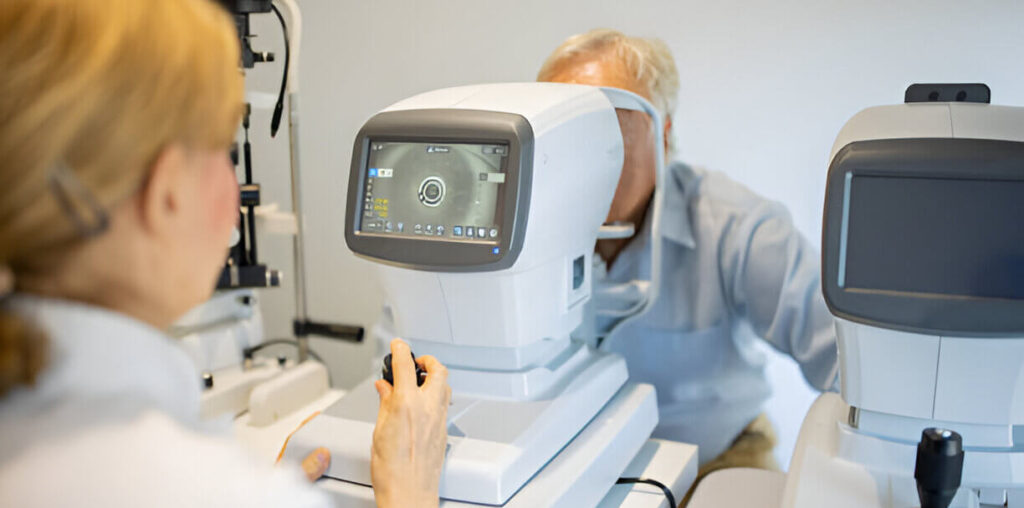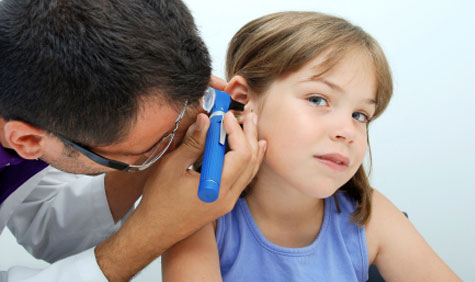Eye care has come a long way with advanced technologies. One such innovation is the corneal topography system. This device helps doctors get a detailed map of the cornea. It plays a key role in diagnosing and treating various eye conditions. In this article, we’ll explore the benefits of using a corneal topography system.
What Is a Corneal Topography System?
A corneal topography system is a tool used to map the surface of the cornea. The cornea is the clear, dome-shaped part of the eye. It plays an essential role in focusing light and maintaining clear vision. Any irregularities in the cornea can lead to vision problems.
This system uses special technology to create a detailed image, often called a “topographical map.” The map shows the curvature and shape of the cornea. It helps doctors understand the cornea’s structure and identify problems.
How Does a Corneal Topography System Work?
The system works by projecting light onto the cornea. This light reflects back into the device, which captures the data. The data is then processed to create a color-coded map of the cornea. Different colors represent variations in the corneal curvature.
The process is quick, non-invasive, and painless. It does not require any direct contact with the eye. Patients simply look at a target while the machine takes measurements.
Benefits of Using a Corneal Topography System
The corneal topography system offers several benefits for both patients and eye care professionals. Let’s look at these in detail.
1. Early Detection of Corneal Conditions
Corneal diseases like keratoconus and corneal dystrophy can develop slowly. Often, symptoms appear only when the condition is advanced. A corneal topography system helps detect these issues early.
The detailed map reveals even minor irregularities in the cornea. Early detection allows doctors to start treatment sooner. This prevents further damage and helps preserve vision.
2. Precise Measurements for Surgery
Eye surgeries, like LASIK or cataract removal, require accurate measurements of the cornea. The corneal topography system provides these precise measurements. It ensures the cornea is suitable for the procedure.
The system also helps in planning the surgery. Doctors can use the data to customize treatments based on the patient’s unique corneal structure. This improves the success rate of surgeries.
3. Better Contact Lens Fitting
Contact lenses must fit properly to avoid harming the cornea. Poorly fitting lenses can cause discomfort, irritation, and long-term damage. The corneal topography system helps determine the exact shape of the cornea.
Doctors can use this information to recommend the right type of contact lenses. This ensures a comfortable fit and reduces the risk of complications.
4. Monitoring Eye Conditions
Patients with chronic eye conditions need regular monitoring. A corneal topography system tracks changes in the cornea over time. It helps doctors understand how a condition is progressing.
For example, in keratoconus, the cornea becomes thinner and more cone-shaped. The system provides accurate data to monitor these changes. This helps doctors adjust treatment plans as needed.
5. Non-Invasive and Painless
Many patients feel anxious about eye exams, especially if they involve invasive procedures. The corneal topography system offers a non-invasive, painless solution. It does not require any physical contact with the eye.
The test is quick and comfortable. Patients can relax while the device takes measurements in just a few seconds.
6. Improved Diagnosis and Treatment Planning
The detailed maps provided by the corneal topography system allow for better diagnosis. Doctors can identify irregularities that might not be visible with standard tools. These maps also help in creating precise treatment plans.
For example, patients with astigmatism can benefit from customized corrective lenses or surgeries. The system ensures that the treatment targets the specific problem areas.
7. Enhanced Patient Education
Patients often want to understand their eye health better. The color-coded maps created by the system are easy to interpret. Doctors can use these maps to explain a condition to the patient.
This improves communication and helps patients make informed decisions about their treatment. It also builds trust between the patient and the doctor.
Who Can Benefit from a Corneal Topography System?
The corneal topography system is beneficial for a wide range of people, including:
- Patients with Corneal Diseases: It helps detect and monitor conditions like keratoconus.
- Candidates for Eye Surgery: Ensures accurate measurements for procedures like LASIK.
- Contact Lens Wearers: Improves lens fitting and reduces discomfort.
- Chronic Eye Condition Patients: Tracks changes and adjusts treatment plans.
Common Applications of the Corneal Topography System
The system is used in various areas of eye care. Here are some common applications:
- Pre-Surgical Evaluations: Ensures the cornea is ready for surgery.
- Post-Surgical Monitoring: Tracks recovery after procedures.
- Refractive Error Diagnosis: Helps in identifying issues like astigmatism or myopia.
- Specialized Contact Lens Fittings: Creates custom lenses for complex corneas.
How to Choose the Right Corneal Topography System
If you are an eye care professional looking to invest in a corneal topography system, consider the following factors:
- Image Quality: Look for systems with high-resolution imaging.
- Ease of Use: Choose a model that is simple to operate and integrates well with your workflow.
- Software Features: Ensure the software provides detailed analysis and customizable options.
- Compatibility: Check if the system works with your existing equipment.
- Customer Support: Opt for a company that offers reliable training and support.
Conclusion
The corneal topography system is a must-have tool in modern eye care. It offers early detection of diseases, precise measurements, and improved patient care. Its non-invasive design and advanced features make it essential for both routine exams and specialized treatments.
Investing in a corneal topography system ensures better outcomes for patients. Whether for diagnosis, treatment planning, or monitoring, this device is a game-changer in ophthalmology. Patients and doctors alike benefit from its accuracy and efficiency, making it an indispensable part of eye care.




